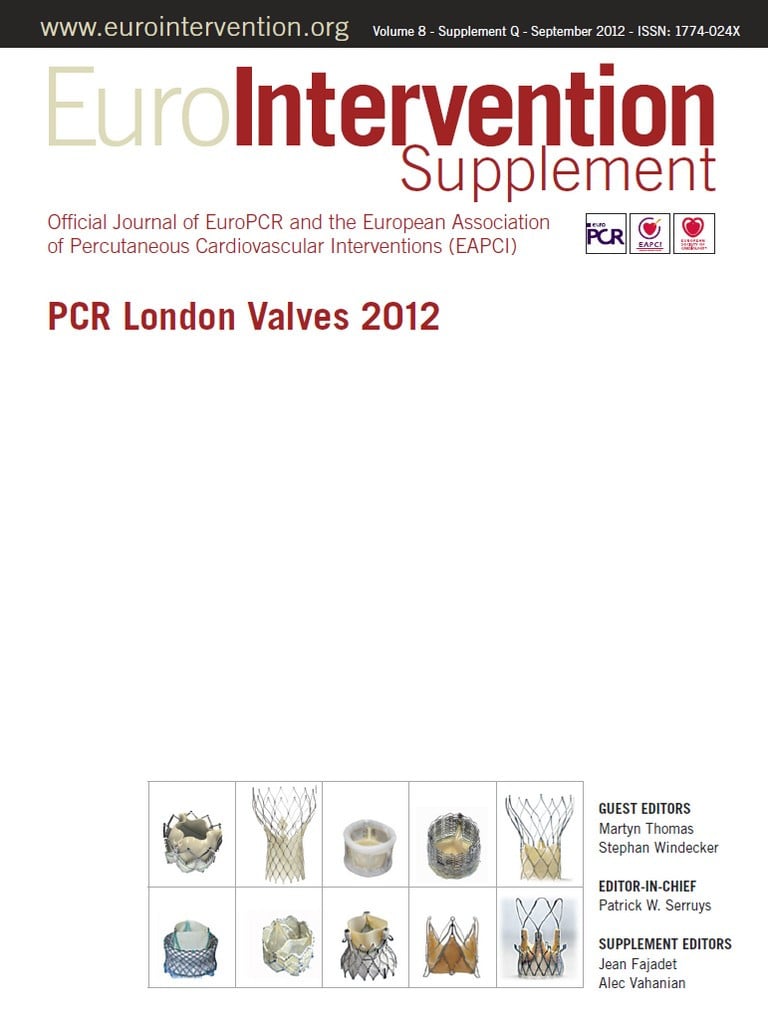![]()
Treatment and consequences of regurgitation during transcatheter valve therapies
Predictors of post-procedure paraprosthetic aortic regurgitation following self-expanding valve implantation: a multicentre registry analysis
Aims: The mechanisms of paraprosthetic aortic regurgitation (PPAR) in transcatheter valve intervention is related to patient and procedural factors. We studied the association of balloon valvuloplasty and implant depth with PPAR.
Methods and results: We conducted a multicentre (Rotterdam, Brompton, Harefield) analysis of 295 patients undergoing Medtronic CoreValve implantation with prior CT annular sizing. Significant PPAR was defined as moderate or severe angiographic regurgitation. Implant depth was measured as the mean distance from the nadir of the non- and left coronary sinuses to the distal valve frame angiographically. Pre-implantation nominal and achieved balloon size during valvuloplasty were recorded. The majority of patients had mild (35.5%), trivial (20.7%) or no (7.6%) PPAR with significant PPAR observed in 36% of patients. Significant PPAR was associated with a larger mean native annular diameter (p=0.01) and annulus to valve size ratio (p=0.03). Significant PPAR was also associated with increased depth of implantation (p=0.035). Although nominal balloon and native valve sizes were well matched, underexpanded balloon size was associated with significant PPAR (p=0.04). 13.7% of patients had post-dilatation of the implant.
Conclusions: Significant paraprosthetic aortic regurgitation following Medtronic CoreValve implantation is associated with larger native valve dimensions and increased depth of implant. Adequacy of balloon valvuloplasty may also predict PPAR.

